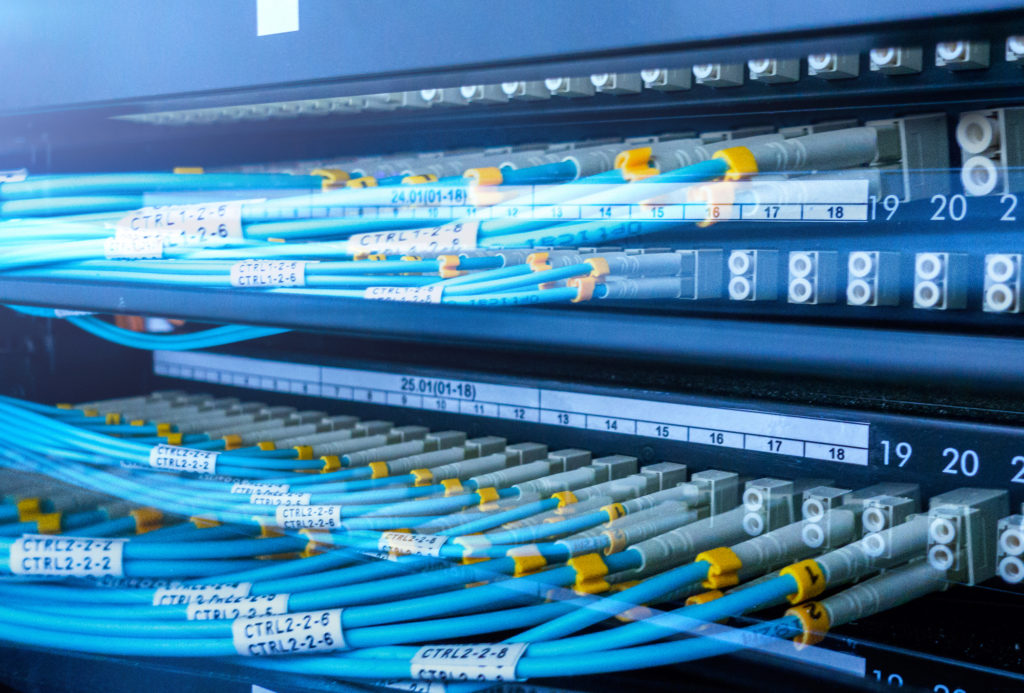## Conquering the Distance: Unleashing the Power of Fibre Optics for Long-Distance Data Transmission
In today’s data-driven world, information needs to travel fast and far. For critical applications like global communication, high-speed internet, and cloud computing, traditional copper cables simply don’t cut it. That’s where the revolutionary technology of **fibre optics** steps in, offering a robust and future-proof solution for **long-distance data transmission**.
**Shining a Light on Fibre Optics:**
Unlike copper cables, which transmit data through electrical signals, fibre optics utilize **pulses of light** to carry information. This light travels through **thin strands of glass or plastic**, known as **optical fibres**. Here’s why fibre optics reign supreme for long-distance data transmission:
* **Unmatched Speed:** Fibre optic cables can transmit data at **terabits per second (Tbps)**, significantly faster than even the most advanced copper cables. This translates to seamless streaming, ultra-fast downloads, and real-time communication across vast distances.
* **Minimal Signal Loss:** Over long distances, electrical signals in copper cables weaken and degrade. Fibre optic cables, however, experience **minimal signal loss**, ensuring data integrity and clarity even over thousands of kilometres.
* **Immunity to Interference:** Electrical signals are susceptible to electromagnetic interference (EMI) from power lines, radios, and other sources. Fibre optic cables, being light-based, are **immune to EMI**, ensuring reliable data transmission in challenging environments.
* **High Bandwidth Capacity:** The inherent design of fibre optic cables allows for a **massive bandwidth**, meaning they can transmit significantly more data simultaneously compared to copper cables. This is crucial for supporting the ever-growing data demands of applications like video conferencing, online gaming, and cloud computing.
* **Durability and Security:** Fibre optic cables are **lightweight, flexible, and resistant to corrosion**, making them ideal for harsh environments. Additionally, the light-based transmission makes them inherently **more secure** against data tapping compared to electrical signals.
**Amplifying the Reach: Technologies for Extended Journeys:**
While fibre optics excel at long distances, signal attenuation eventually occurs. To overcome this, several technologies are employed:
* **Optical Amplifiers:** These devices strategically placed along the cable route boost the light signal, enabling data to travel even further without degradation.
* **Dense Wavelength Division Multiplexing (DWDM):** This technique transmits multiple data streams on different wavelengths of light through a single fibre, significantly increasing capacity.
**The Global Fibre Optic Network: Connecting Our World:**
Fibre optic cables form the backbone of the **global internet infrastructure**, connecting continents and countries seamlessly. They power undersea cables, terrestrial networks, and data centres, facilitating the exchange of information at an unprecedented scale.
**The Future is Fibre-Optic:**
As data demands continue to soar, fibre optics will undoubtedly play an even more critical role in **shaping the future of communication**. With ongoing advancements in materials, transmission techniques, and network infrastructure, fibre optics promises to provide a reliable, secure, and high-speed data transmission solution for generations to come.
**Tags:** fibre optics, long-distance data transmission, high-speed internet, bandwidth, optical amplifier, DWDM, global communication, data centre, future of technology


Leave A Comment